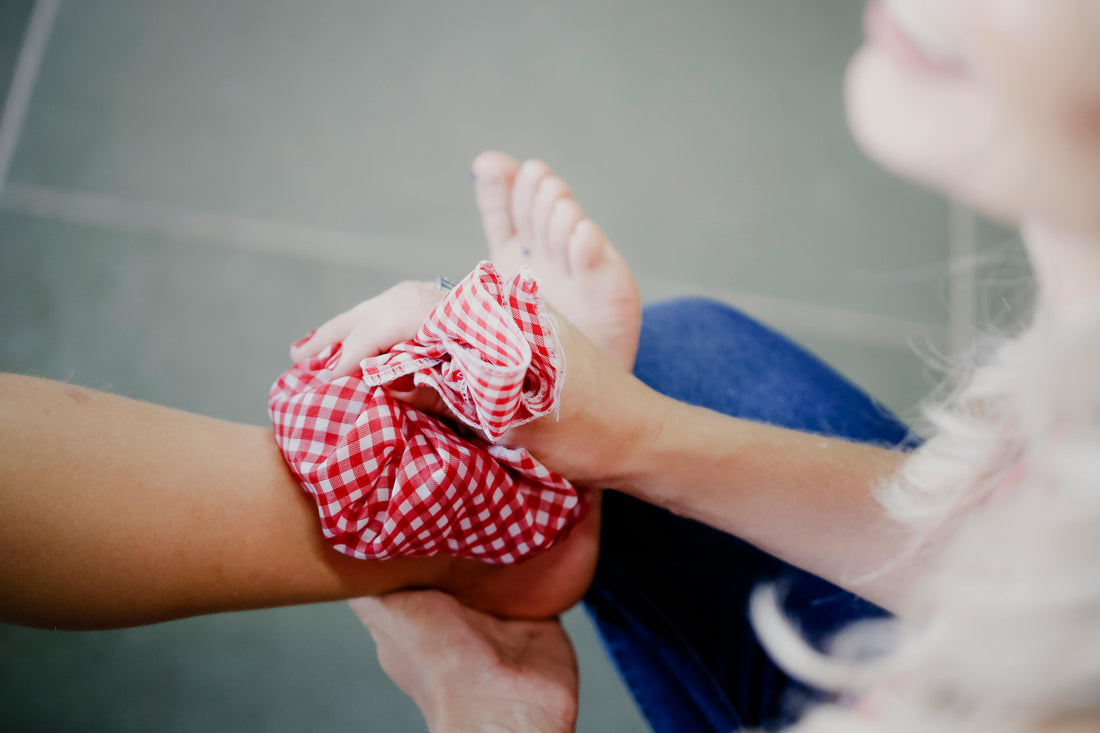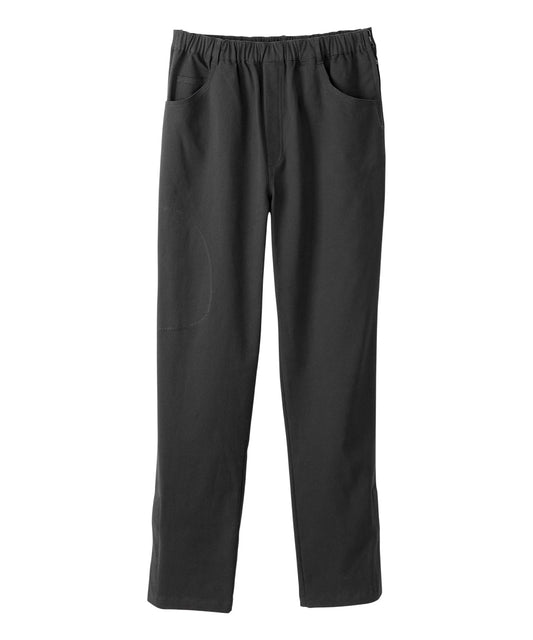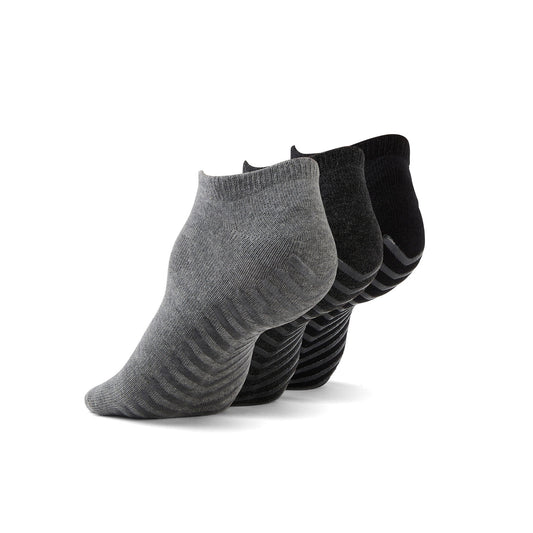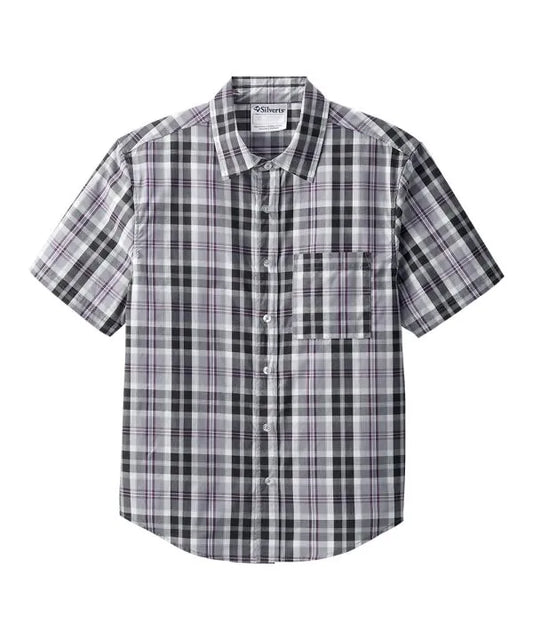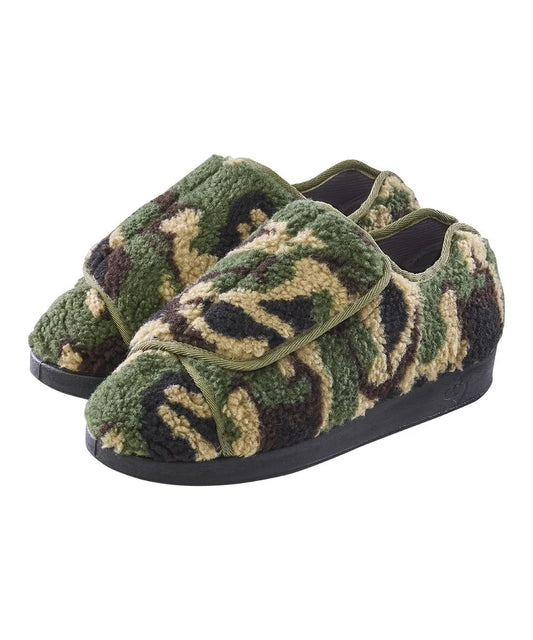Written By: Shreeya Shah
When I first witnessed my aunt's struggle to put on her compression stockings, I didn't understand the magnitude of her pain. She suffered from lymphedema, which caused her legs to swell constantly. While the stockings were meant to aid her condition, they were also a daily battle. I remember her painful sighs, body wiggling and twisting, and frustration rising with her blood pressure as she tried to slip them over her ankles. She used to say it was like "wrestling a boa constrictor" every morning, but I could see beneath the joke was a real fatigue. A fatigue for comfort, dignity and style.
The struggle of putting on her stockings did not just take a few minutes; the struggle influenced her entire morning routine, contributed to what outings she could muster up the energy for, as well as limited the types of clothes she could think about wearing. Shopping trips were often fruitless, with the visits to the fitting room being exasperating battles, only to come home empty-handed, leaving her even more upset than when she left. Seeing this first-hand made me realize the true struggle, and brought to light how limited and inaccessible fashion can be when you live with chronic swelling.
Her experience is far from rare. Millions of individuals live with lymphedema, edema, or a similar underlying condition leading to chronic swelling. The fact remains that clothing becomes much more than just fabric, but a daily negotiation point for physical comfort, emotional well-being, and self-expression. When clothing compromises the needs of persons dealing with swelling, it is more than just uncomfortable; it is disheartening. That is what compression-friendly clothing is: a truly life-altering experience, changing how we see ourselves, as well as how we get dressed.
At June Adaptive, we know this challenge firsthand. Our purpose is based on empathy and innovation, and we develop adaptive clothing that merges function and fashion to help people feel confident and comfortable without sacrificing either. Whether you are managing swelling in your arms or legs, our clothes accommodate the wear of compression garments, honouring your unique style.
It is about more than just function: it is empowerment. Everyone deserves the dignity of dressing independently, comfortably, and beautifully each day. Let us take a look at how fashion can serve the swelling community, what to consider when selecting your compression-friendly outfit, and where to find pieces to support your accessibility with great fashion.
How Clothing Can Accommodate Swelling
Swelling can be unpredictable; it can vary not only daily but also on an hourly basis. Conventional fitted clothing tends to become tighter, increasing your discomfort and restricting circulation. Baggy clothing can also feel awkward, uninviting, or lack support and mobility.
Compression-friendly designs should acknowledge these variations in swelling. Compression clothing should follow the lines of your body, not fight against them. Here are a few adaptive design features to consider:
-
Alterability: You can modify clothing during your treatment with garments that have side zippers, magnetic closures, drawstrings, or velcro, depending on how swollen you are at the time.
-
Elastic panels/stretch zones: Allow for "give" through areas with compression points such as your calves, forearms or abdomen.
-
Non-restrictive seams: Having flat, smooth seams and tagless garments is helpful with sensitive skin as they reduce the chances of irritation and pressure.
-
Layering options: Clothing that has nice drape so they won't look bulky or out of order, but can accommodate an underlayer, such as a compression sleeve or stocking.
Extra-long zippers, well-placed seams, and more forgiving silhouettes allow garments to look good while taking swelling into account. Little details such as longer hemlines and deeper armholes will make a big difference for someone who is trying to manage their variable body size. Clothing that has one or more of these features allows someone to maintain a sense of style without sacrificing health or comfort.
When you find fashion that you can wear all day long, it means less time focusing on discomfort and stress, and more time enjoying life to the fullest and with confidence.
Product Recommendations for Compression Support
June Adaptive presents a variety of products that specifically address lymphedema and chronic swelling, all with comfort, function and usability, fully included in everyday wardrobes.
-
Unisex Diabetic Everyday Crew Socks - 2 Pack: These soft, non-binding socks offer gentle compression without constricting swollen feet and ankles. Their seamless design helps prevent irritation, making them perfect for long days on your feet.

-
Men’s Extra Wide Fit Walking Shoes: Designed with added width and easy-entry features like adjustable velcro straps, these shoes reduce pressure on swollen feet and ankles while providing secure support and stability.

-
Women’s Front-Closing Comfort Bra: Built with wider straps and a front closure to reduce shoulder strain and ease dressing, this bra offers flexibility and light support that accommodates torso or chest swelling without discomfort.

Each product is thoughtfully engineered to combine comfort, ease of wear, and subtle style, supporting your wellness goals without sacrificing your wardrobe.
Best Stretchable Yet Supportive Fabrics
The comfort and functionality of a clothing item depend largely on the fabric. For individuals with swelling or individuals who wear compression garments, the fabric choice can be the difference between comfort and discomfort.
Fabrics that balance stretch and support include:
-
Bamboo and modal blends: These materials are known for their softness and breathability, which minimize skin irritation and wick away moisture, which is perfect for those with skin sensitivity due to swelling.
-
Cotton-spandex blends: These fabrics also offer the durability of cotton and the flexibility of spandex, which lends structure without being restrictive.
-
Knit fabrics: Knits (especially jerseys or ribbed knits) provide stretch in all directions and support compression wear without sacrificing fashion.
The right fabric should feel like a part of your body. It should respond as you respond in the course of the day, provide support when you need it, and offer freedom when you need it. Choosing to wear adaptive clothing sourced from these types of fabrics is one of the quickest ways to improve comfort in your day-to-day experiences.
Adaptive Features for Compression Garments
For many, compression garments are essential medical items that you can't live without – but that doesn't mean getting dressed has to be complicated. Adaptive fashion makes a real difference in the middle of balancing health and independence.
Common challenges include bending, reaching, and fine motor movement challenges. June Adaptive addresses these issues with intelligent design coordination:
-
Magnetic closures: Eliminate the need for traditional buttons or zippers, making jackets, shirts, and even pants easier to use for people with arthritis or hand weakness.
-
Wide leg and sleeve openings: These make it easier to slip clothing over bulky compression garments or bandages without friction.
-
Flat seams and tag-free interiors: Reduce pressure and eliminate scratchiness that can irritate already sensitive or swollen skin.
-
Wrap-style tops and side-zip pants: Simplify dressing and undressing while reducing strain on the limbs.
When clothing is thoughtfully designed to work with compression gear, it allows users to regain control of their daily routines.
How to Layer Compression Clothing
Layering is about more than just staying warm; it is a plan to be comfortable, cover up medical garments and express your style. For those wearing compression clothing, layering must be approached with caution.
Here are smart layering tips:
-
Begin with compression: Use compression socks, sleeves, or garments fitted without folds or bunches for circulation and comfort.
-
Choose breathable, stretchable mid-layers: Lightweight tops and pants in jersey, bamboo, or modal will keep you warm and provide structure without bulk.
-
Consider the weather, your outfit is changeable: Layering in removable items like cardigans or scarves will allow you to adjust your outfit depending on the temperature, or your swelling levels at different points in the day.
-
Balance fit and flow: Look at the silhouettes that provide some flattery and do not adhere. Could be longer tunics, an A-line style top, or wide-legged trousers, where you wear the compression garment low, underneath.
Smart layering ensures you're comfortable, stylish, and ready for whatever the day throws at you, without sacrificing the therapeutic benefits of your compression wear.
Embracing Comfort and Confidence
Just because you may be living with lymphedema, recovering from surgery, or contending with a chronic illness doesn’t mean you have to lose your sense of style. In fact, by choosing adaptive fashion, you can make an empowering choice about how you show self-love, body positivity, and resilience.
At June Adaptive, we believe clothing should be empowering. Each product we carry has been designed with you, the person in mind, not the product. We understand the desire for something aesthetically pleasing that meets your practical needs, and we want to make it available to everyone.
Dressing for comfort at home, preparing for a day out, or accommodating a medical condition, clothing can help bring back a sense of self. Compression-friendly fashion gives you a way to help take charge of your mornings, move your body, and feel visible.
Explore our collection at June Adaptive to discover how adaptive wear can make your daily life not only easier but also more joyful. Don’t forget to sign up for our newsletter to receive exclusive updates and access our free Disability Grants Guide for support across Canada and the U.S.

